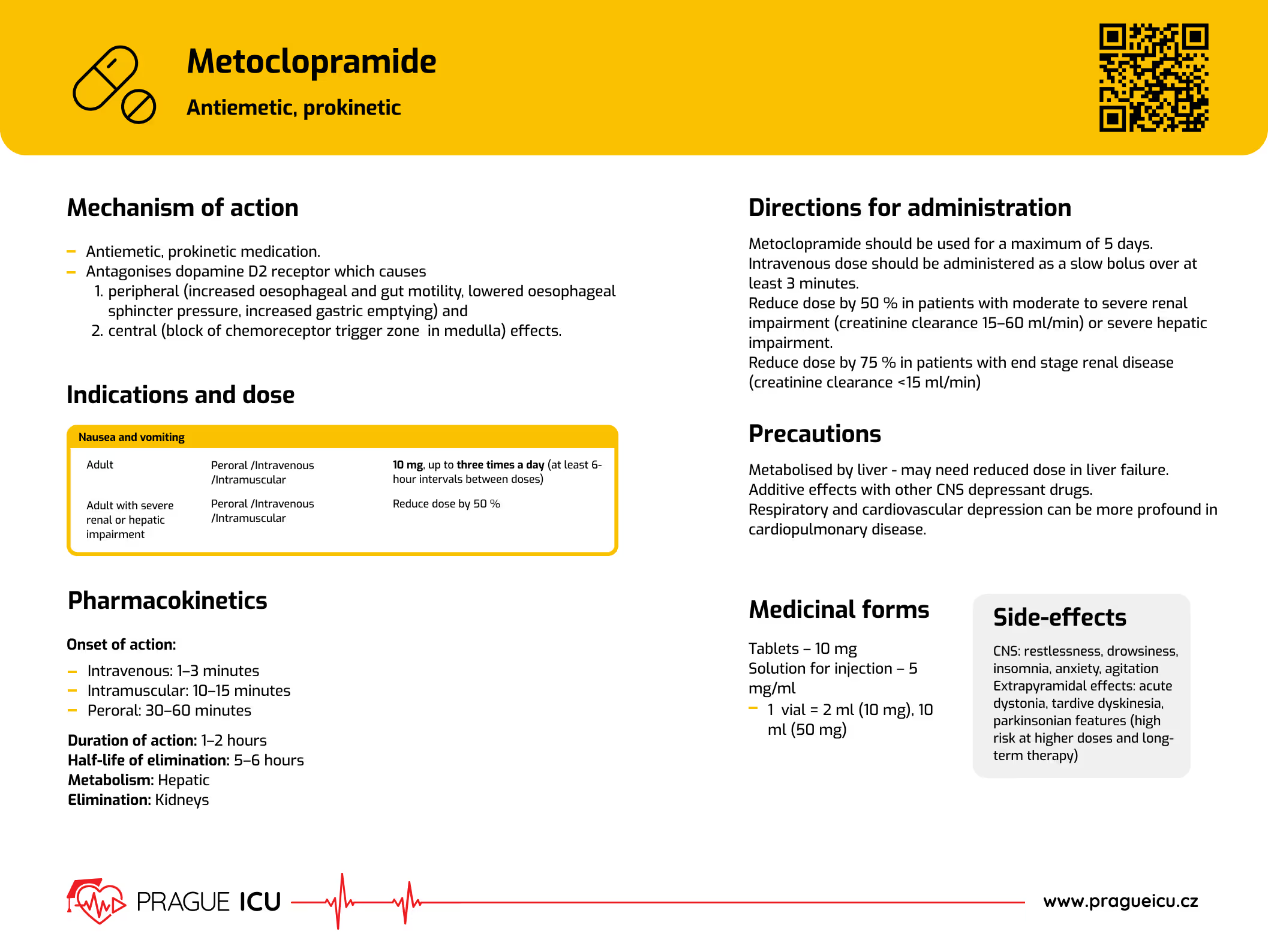
Antiemetic, prokinetic medication.
Antagonises dopamine D2 receptor which causes
- peripheral (increased oesophageal and gut motility, lowered oesophageal sphincter pressure, increased gastric emptying) and
- central (block of chemoreceptor trigger zone (CTZ) in medulla) effects.
Indications and dose

Pharmacokinetics
Onset of action:
- Intravenous: 1–3 minutes
- Intramuscular: 10–15 minutes
- Peroral: 30–60 minutes
Duration of action: 1–2 hours
Half-life of elimination: 5–6 hours
Metabolism: Hepatic
Elimination: Kidneys
Directions for administration
Metoclopramide should be used for a maximum of 5 days.
Intravenous dose should be administered as a slow bolus over at least 3 minutes.
Reduce dose by 50 % in patients with moderate to severe renal impairment (creatinine clearance 15–60 ml/min) or severe hepatic impairment.
Reduce dose by 75 % in patients with end stage renal disease (creatinine clearance <15 ml/min)
Medicinal forms
Tablets – 10 mg
Solution for injection – 5 mg/ml
- 1 vial = 2 ml (10 mg), 10 ml (50 mg)
Side-effects
CNS: restlessness, drowsiness, insomnia, anxiety, agitation
Extrapyramidal effects: acute dystonia, tardive dyskinesia, parkinsonian features (high risk at higher doses and long-term therapy)
References



